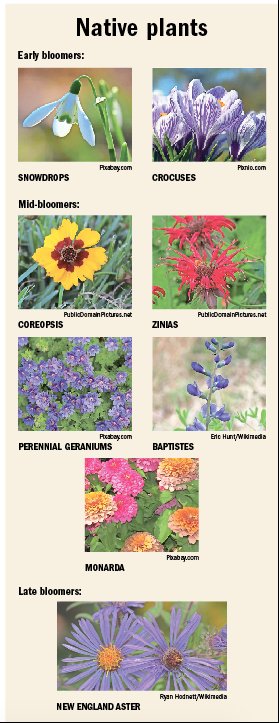Central Nassau Rotary Club tries to save insects

Imagine taking a road trip for more than 13 hours without being able to stop to rest and get some food. That’s what it’s like for insects migrating from Canada to Mexico each year, due to deforestation and habitat loss, professional horticulturist Jennifer Cappello-Ruggiero explained at the Central Nassau County Rotary Club’s workshop to save pollinators at the Franklin Square Public Library on Feb. 26.
Pollinators provide humans with fruits and vegetables, and as their population declines, so does our agriculture. In fact, Pat Thomas wrote in the Ecologist Journal in 2008 that if “bees disappeared off the surface of the globe, then man would only have four years of life left. No more bees, no more pollination, no more plants, no more animals, no more man.”
To help prevent this from happening, Rotary Club President Rony Kessler decided the club should sponsor workshops from the North American Butterfly Association, and buy plants to help people build gardens for pollinators in their backyards.
Currently, many Long Islanders have monocultures on their lawns, with only clean-cut grass and no diversity in plants, Cappello-Ruggiero said, which creates an almost desert-like situation for pollinators like hummingbirds, bees and butterflies. “A lawn like that adds absolutely nothing, gives them nothing to feed off, and you’re not going to have them,” she said. “If you’re really interested in pollinators and having them, you really need to create environments where they can find feeding places.”
Doing so, she noted, requires a variety of native plants that have co-evolved with the pollinators. Different creatures prefer different types of plants, and gardeners should get plants that grow at different times in the season to support a pollinators entire lifecycle, Cheryl Bennett, the president of Long Island’s NABA chapter, suggested. Some flowers, like the snow dropper, primroses and bluebells bloom early in the season, while others, like the asters, bloom much later in the season.
Gardeners should also ensure that these plants are clumped together in at least 3-feet-wide plots, Ruggiero said, because when the pollinators are migrating, they want to find a place where they can rest for a day. “They want to make sure they get the best bang for their buck, basically,” she told the crowd. “If you plant some individual plants over there, it’s not a place that’s really going to attract [the pollinators] as much, because they’re not going to be able to feed on there for a long period of time.”
To make those plots look nicer, she suggested, homeowners could install fences or walkways around their pollinator gardens. “And because you had the interest in doing all this, hopefully others will learn from you, and maybe they can change their perspective on what they want their garden to look like, because that’s the most important thing,” Cappello-Ruggiero noted. “You know, we can come and do talks like this, and tell everybody what is beneficial for the pollinators, but it’s seeing it and going out there and looking at it that makes a difference.”
The Rotary Club will hold another pollinator workshop on April 2 at the West Hempstead library. Anyone in attendance can sign up to get free plants.






